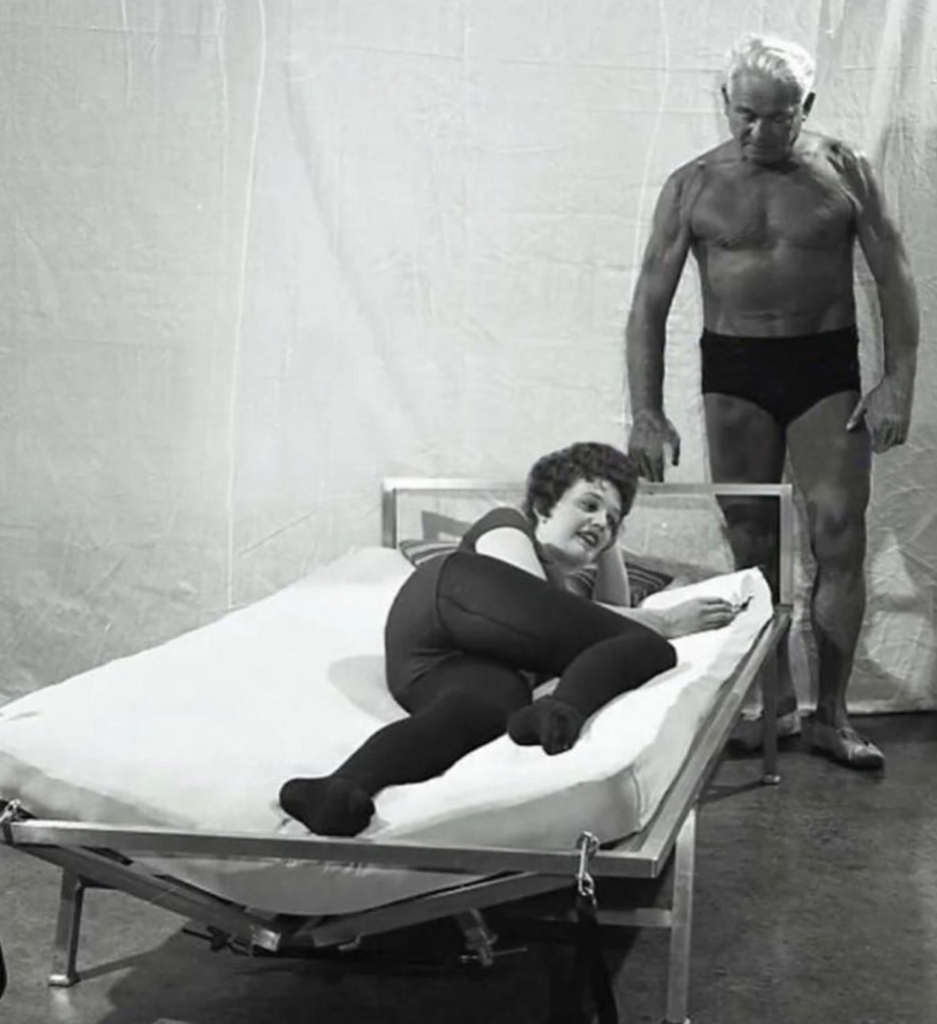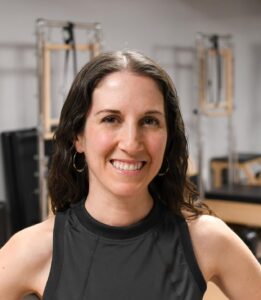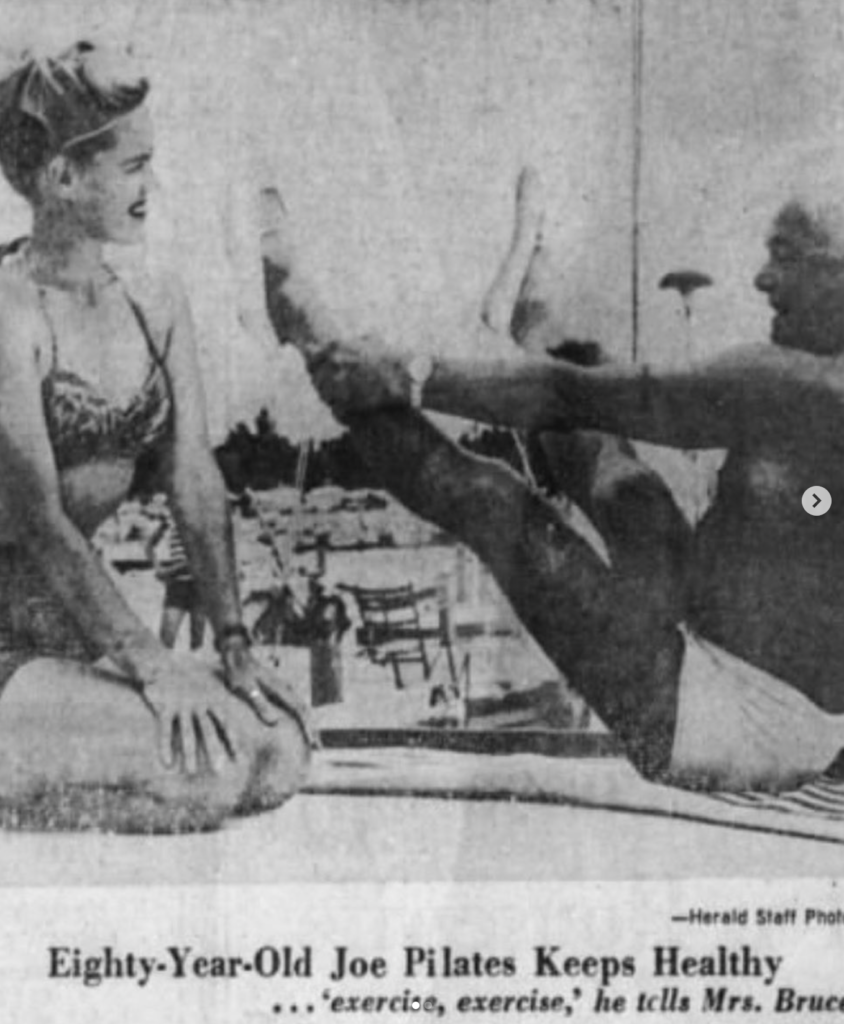Issue #417 – Wednesday, November 29, 2023
All the Sunshine You Can Get
by Sophia Briegleb
“By all means, never fail to get all the sunshine and fresh air that you can… Whenever and wherever possible, wear shorts or sunsuits outdoors, and let the lifegiving ultraviolet rays reach and penetrate into every skin pore of your body,” said Joseph Pilates in his 1945 book, Return to Life Through Contrology.
Meanwhile, the U.S. Food and Drug Administration suggests avoiding the sun by wearing hats, sunscreen and sunglasses, as well as not going outside at certain times of the day. We are told that the sun’s UV radiation causes “harmful effects.” If we follow this advice, we get very little sun and spend more time indoors.
But humans evolved with the sun. Every living thing on this planet and everything we eat to sustain us evolved with the sun. How could something we’ve co-existed with for so long be so dangerous for us?

Vitamin D deficiency epidemic
For the past four years, my vitamin D levels have been slightly low. Below 20 ng/ml is considered deficient, while below 30 is insufficient. A 2011 study found that 42% of Americans are deficient in vitamin D (with 82% of Blacks and 69% of Hispanics deficient) and a 2020 study found that about 40% of Europeans are deficient. We are led to believe that we can supplement our way out of this problem. However, I was personally supplementing with high doses daily and still my blood levels were unimpressively in the 30s..
More sun, better health?
Interestingly, some research shows better longevity with more sun exposure. In fact, this 2016 study concluded that sunbathers live longer! The authors state that “avoidance of sun exposure is a risk factor for death of a similar magnitude as smoking.” Many diseases—like cancer, diabetes, and multiple sclerosis—have a higher incidence with higher latitudes, implying something in sun exposure is preventative (source; MS source).
So is the sun life giving, as Joe called it, or “harmful” (FDA) and “damaging” (American Academy of Dermatology) as many claim today? Perhaps the answer isn’t so black or white. I’ve been following the typical sun avoidance recommendations for 18 years—always wearing hats, sunglasses and sunscreen when outside. But my sleep and energy weren’t great and my vitamin D levels were low, so I decided to get a little more sun for myself.
I began by exposing my eyes to the sun when I first woke in the morning. Early morning sun is full of infrared rays, increasingly shown in research to be healing to cells. When it was cooler, I sat inside next to an open window. As the weather permitted, I went outside for a morning dose of sun. Earth’s atmosphere filters most UV light in the morning so this is a great time to enjoy the sun without worry of burning.
Sunlight directly into our eyes provides many benefits. Photosensitive cells in the retina connect to various important structures in our brain:
- Hypothalamus (setting our circadian rhythm which controls many biological processes within the body)
- Pituitary gland (the master gland that controls a variety of hormones)
- Pineal gland (responsible for making melatonin in the morning from exposure to light and then releasing it at night to help us feel sleepy).
Sunlight in the eyes also helps the brain understand the true level of environmental light and prepare the body appropriately for further sun exposure. It also increases production of neurotransmitters like serotonin. Why cheat yourself of these benefits by avoiding sunlight, such as with sunglasses or through UV filtering windows, in your eyes?

Ultraviolet light
Morning sunlight is good for you, but what about midday sun? Depending on your latitude and time of year, UVB and UVA rays start to hit the earth around 9-10am. This is why we’re often told to avoid the sun from 10am-4pm. However, UV rays aren’t all bad! They’re the rays that Joe called lifegiving. We use UVB to synthesize “vitamin” D, which is actually a hormone. We need to make more vitamin D in the sunny months and store it because we can’t produce it in the winter at northern latitudes. UVB also increases the production of sex hormones like testosterone, estrogen, and progesterone (source).
UVB is notably absent at latitudes above the mid 30s from September to April. However, if you live at altitude, you may be able to get more UVB for longer (every 1000 feet in elevation increases UVB by 4%). To measure and dose your UVB light, download an app called D Minder, which estimates how many IUs of vitamin D you make given your location, the sun’s intensity, the cloud cover, and your level of clothing coverage. Using this app and some common sense, I made it through six months of sun exposure without burning once, not even on a beach vacation at 21-degrees latitude. And over the summer, my vitamin D levels increased by 60% to the mid 50s!
And while we think of UVA light as being mostly responsible for aging, it is also highly antimicrobial, found to kill bacteria, viruses, even influenza and coronaviruses. In the flu pandemic of 1918, which Joe and practitioners of his method proudly survived, hospitals were so full of patients that they began treating some outside. The death rate for patients within the hospital was 40% but for those treated outside, it was only 13% (source).
Is melanoma risk significant?
One of the reasons we avoid the sun is worry about melanoma, a dangerous form of skin cancer. However, let’s get a little perspective. While 97,000 cases of melanoma are expected in the U.S. in 2023, that’s 0.029% of the population. In the meantime, more than 3x that number will be diagnosed with breast cancer, whose risk is reduced by sun exposure. Higher levels of vitamin D are correlated with lower cancer risk (source, source) so while avoiding the sun may reduce the risk of skin cancer, it may increase the risk of other more prevalent cancers and illnesses. No one wants to get melanoma, but consider its relative risk and weigh that against the other diseases you don’t want. Do you avoid cars just because of the risk of an accident? No, you simply take proper safety precautions. I’m arguing for the same with the sun.
Friend or foe?
My conclusion after six months of studying and experimenting with sun is that with a little knowledge and at the right times of day for the right amount of time, the sun is more friend than foe. I will continue to get as much sunshine and fresh air as I reasonably can, just like Joseph Pilates advised.

Sophia Briegleb has a B.S. in Sports Medicine, an M.S. in Neuroscience, and has taught Anatomy, Physiology and Human Biology at the college level. She graduated from The Pilates Center’s Advanced Teacher Training program in August 2016 and became PMA certified. She opened Kinesis Pilates in 2016, where she and seven other teachers have taught over 20,000 hours of Pilates lessons. She has completed the Kathy Grant Heritage Training with Cara Reeser and all seven Movement Science Made Simple courses. She’s created two CEC certified workshops and taught one of them, The Lymphatic System and Pilates, at the Pilates Method Alliance Conference in 2022.


